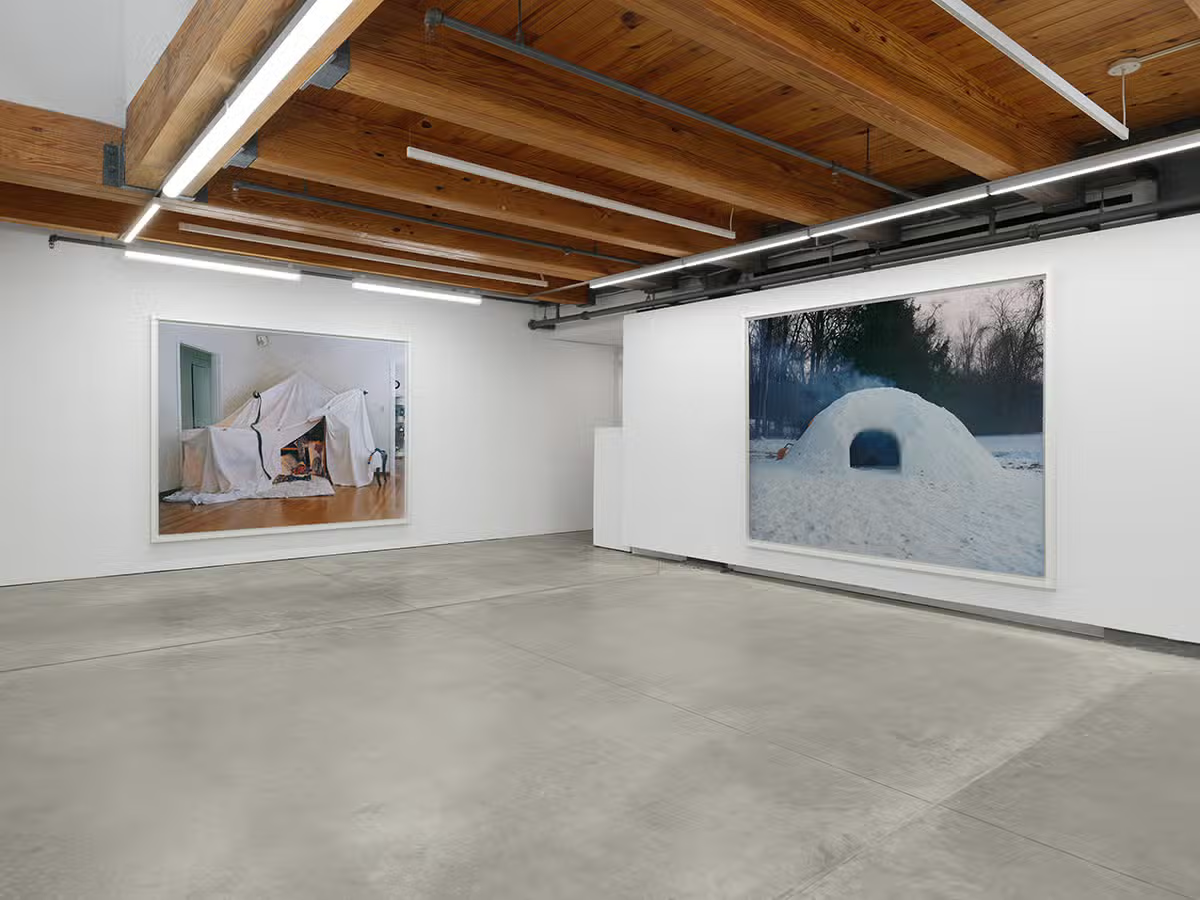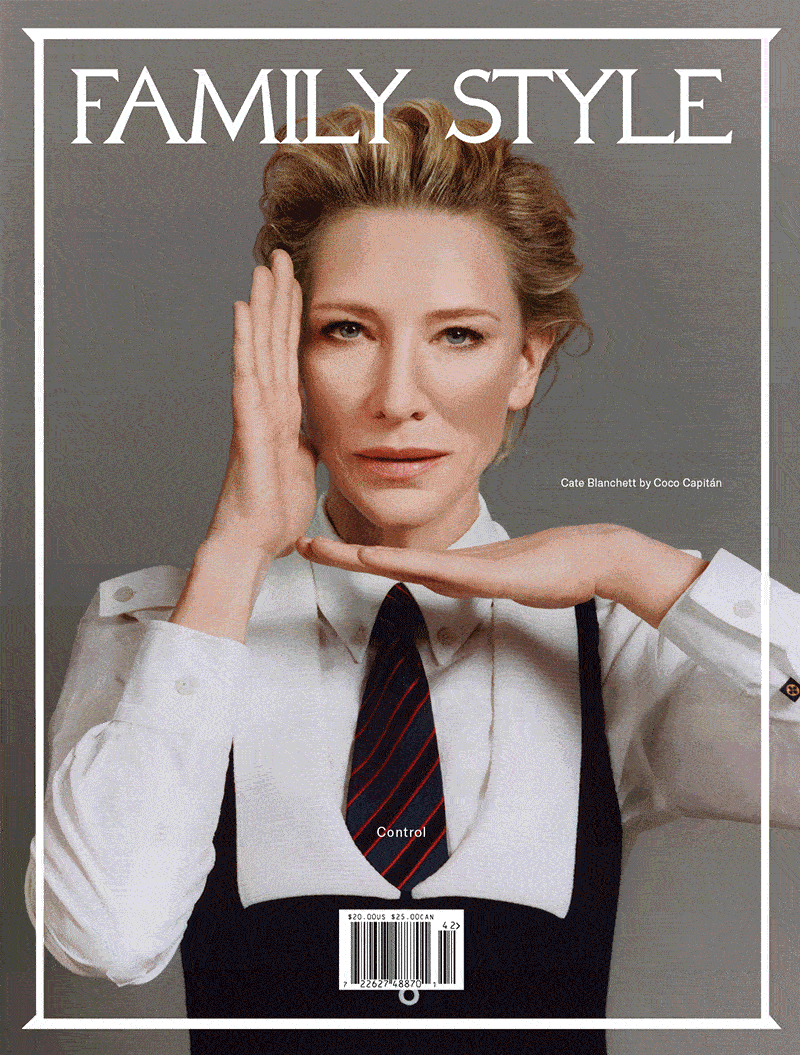_result.avif)
Jesse Gouveia, Untitled (hook road No. 2), 2021-2024. Image courtesy of the artist and Anonymous Gallery.
Jesse Gouveia’s earliest memories are inextricably linked to his childhood in Seattle. The landscape of rain and snow, forest and beach, all within close proximity, set the stage for his imagination. And, like many kids, Gouveia turned to the materials in his surroundings, and tried to build. “How I entertained myself was with wrapping cardboard and duct tape to make objects, or carving wood with a pocket knife,” he says. “We camped a lot, so there was a lot of that going on in the woods.” Reviving this childhood curiosity is at the center of Gouveia’s new solo show at Anonymous Gallery, “Plaid.” The exhibition features four large-scale photographs of handmade forts in the Seattle area that Gouveia created as an adult between 2020 and 2024: one in the woods made of branches; one a hollowed-out mound of snow; one crafted from driftwood on the beach; and one made of sheets, boxes and mementos in the house in which he grew up.
“It's such a primal thing,” Gouveia says of the subject matter. “As a kid, it’s the first time you’re given ownership, usually somewhere you feel really safe. It’s also so small that no one else bigger is going to come inside, it’s just your fit.” With that, the ephemeral nature of a miniature shelter forged out of sticks, snowflakes, boxes, or the like, lends to romanticized memories around them. “You tend to blend them into your subconscious, instead of it being from a concrete place or time,” he adds.

Installation view of "Plaid." Photography by Installshots.art. Image courtesy of the artist and Anonymous Gallery.Installation view of "Plaid." Photography by Installshots.art. Image courtesy of the artist and Anonymous Gallery.
Setting out to recreate these forts as an adult, Gouveia felt that the cumulative endeavor was, in a way, an attempt to resolve the lack of fulfillment he experienced as a much smaller person with a big imagination. “A lot of the play I did as a kid was frustrating because I could never fully exercise my imagination and make things in the ways that I wanted to, because I was a kid. My capabilities never felt like I could achieve what I wanted to in my head,” he says.
The four photographs on view have no correlation to the four seasons, but Seattle’s capricious weather was critical in shaping at least one of the works, Untitled (hook road No. 1), 2021-2024—the fort made of branches, which the artist built over a few days in the woods. “The morning that I was going to photograph it, it rained,” he says. “At first I was thinking that wouldn't be great, but it gave it a beautiful shimmer. Then, it was spring, but nothing had bloomed yet. That morning, all the tree buds bloomed. So in this photo, there's all this green in the background that would not have been there the day before.”
_result.avif)
Jesse Gouveia, Untitled (hook road No. 1), 2021-2024. Image courtesy of the artist and Anonymous Gallery.
The only indoor fort, seen in Untitled (52nd street No.1), 2021-2024, so named after the street of the artist’s childhood home, is packed with memorabilia linked to formative experiences. “I found a lot of the stuff that I built my bedroom forts out of, the same blankets and sheets, and tokens of what I felt what was my identity back then,” he says, mentioning a fish-shaped Japanese Boys’ Day flag, which he attended with his dad at age 11; taekwondo belts; and a panda-patterned baby blanket. “All of them kind of have an element of me now and then—I wanted a bit of a blur between my self-perception then and my self-perception now. [Untitled (52nd street No.1)] is the most deeply rooted in my family.”
Prior to the works in “Plaid,” Gouveia’s public-facing projects centered on portraiture. Here, inanimate objects in the form of forts both echo his approach to portraits while at once representing a break from their exclusively personal nature. “My practice revolves a lot around memory, recreating a certain aspect of something I remember,” he explains. “The departure with the show, because I knew this was something that was somewhat of a shared experience, [was to] leave them open, because the absence of a person felt important.”
_result.avif)
Jesse Gouveia, Stand by me, 2024. Image courtesy of the artist and Anonymous Gallery.
Hitting home the abstract yet poignant, universal nature of such absence and the passage of time is a single sculptural work on view, subtly placed next to the gallery’s entrance, a floor about the four photographs. Stand by me, 2024, takes the shape of a light-filled door frame, with the illumination slowly rising from bottom to top over exactly 100 minutes, then beginning again in the same direction. “It's about the effects of consistency and how we look back at old versions of ourselves, or what we look forward to,” Gouveia says. Viewers may perceive the work to be “stagnant,” he adds—but notice a more dramatic shift in the level of light if they revisit it after seeing the rest of the show, or come back on a different day. As for the exact time span of 100 minutes? “I think we could idealize 100 years as a really great life span,” Gouveia offers. And therein lies greater existential resonance: “That element of time is something that is controlling the way the work is interacting with you, and it's not something you can change.”
Jesse Gouveia’s “Plaid” is on view through December 21, 2024 at Anonymous at 136 Baxter Street, New York, NY 10013.





_result.avif)

_result.avif)
_result.avif)



.avif)

